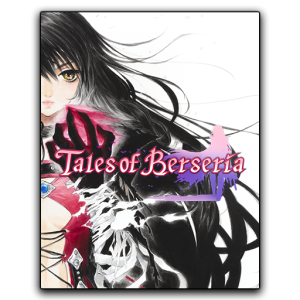Tales of Berseria The sixteenth installment of the popular jrpg series by Bandai Namco, brought to life in 1995 by Tales of Phantasia on the SNES. Tales of Berseria is also the first game in the series in which the protagonist is not a human - the player all the time directs the actions of the young pirate Velvet Crowe, who lives in a fantasy kingdom Midgandu. By the way, the same place appeared in the last installment of the series, Tales of Zestiria, but the action of Tales of Berseria takes place much earlier. Tales of Berseria Download for PC The region consists of several large parts of the country and many small islands, so traveling around the world often comes down to shipping. As in the previous Tales series, the game features a comprehensive, arcade combat system based on unique abilities and combosach. Players see the action from a third-person perspective, and during clashes can control the other team members. Tales of Berseria features fully three-dimensional graphics but the whole comic book style modeled on the Japanese anime is retained.
Tales of Berseria eliminates some of the gameplay issues and changes that Tales of Zestiria fans didn't like. The title, however, does not differ significantly from the classic formula of the cycle. Players see the action from a third-person perspective, exploring a fully three-dimensional game world divided into different locations. Along the way we talk to NPCs and minor tasks that are in addition to the main and linear storyline. After the move, the map visible opponents with whom we initiate to come into contact move. In contrast to the Tales of Zestiria players again fight separate three-dimensional arenas with what has always been known for this series. During the fights in real time, we can directly control all team members. Tales of Berseria features an immersive, arcade combat system based on unique abilities and combosach. This time, players can assign special attacks (artes) to several different keys, deliberately building the most effective combinations of hits.

CPU: Intel Core 2 Duo E8400 3.0GHz or AMD Phenom II X2 550, 3.1GHz
RAM: 2 GB
GPU: GeForce 9800 GTX or AMD Radeon HD 4850
HDD: 15 GB
Tales of Berseria After the great Gravity Rush 2, Yakuza 0 or Resident Evil 7, fans of the old school of game development are eagerly awaiting the release of Ni-Oh. However, before we lay hands on the new position from Team Ninja, it is worth taking an interest in a more modest, but still noteworthy RPG - Tales of Berseria. Although Berseria is already the sixteenth installment in the main Tales of series, it functions as an independent title, so knowledge of the older parts is irrelevant in this case. The classic, "manga" jRPG cycle has come a long way and it has to be honestly said that it has recently been at a turn. In the previous generation, the publisher of the series, Bandai Namco, shot itself twice in the foot, releasing the successful Tales of Vesperia on the Xbox 360, and Tales of Graces on the Wii, i.e. platforms whose owners liked definitely other game genres.
Tales of Berseria Prawda, ports were prepared for PlayStation 3 over time, unfortunately the beautiful Vesperia version for Sony equipment was never translated into English, while Graces was released two and a half years after its debut in Japan. The series was successfully returned to the western market with the premiere of Tales of Xillia, so it is a pity that the direct sequel was very imitative and met with a cooler reception than the "one". The last episode of Tales was Zestiria, which - although in fact it was created with PS3 in mind - was also released on PlayStation 4. You could feel it at every moment of dealing with this title, which is why the accusations against execution appeared as often as critical comments on the scenario and the schematic gameplay. Does Tales of Berseria, first also written with the past generation in mind, herald the return to the form of Bandai Namco Studios?
The action of Tales of Berseria takes place again in the Wasteland universe, which is the same as Tales of Zestiria, but the events presented here take place much earlier, and the title is not related to Sorey's adventures (even cities or other elements of the presented world are called differently). This time we visit the huge kingdom of Midgand, the area of which extends over many continents and islets. Individual areas differ from each other in terms of climate, culture, architecture and mentality of the inhabitants, and as they are separated from each other by seas and rivers, the basic means of transport are, of course, ships. The kingdom's best years are behind it, however, as it has long been digested by a virus known as Daemonblight, which attacks people, animals and even plants, turning everything and everyone into bloodthirsty beasts.